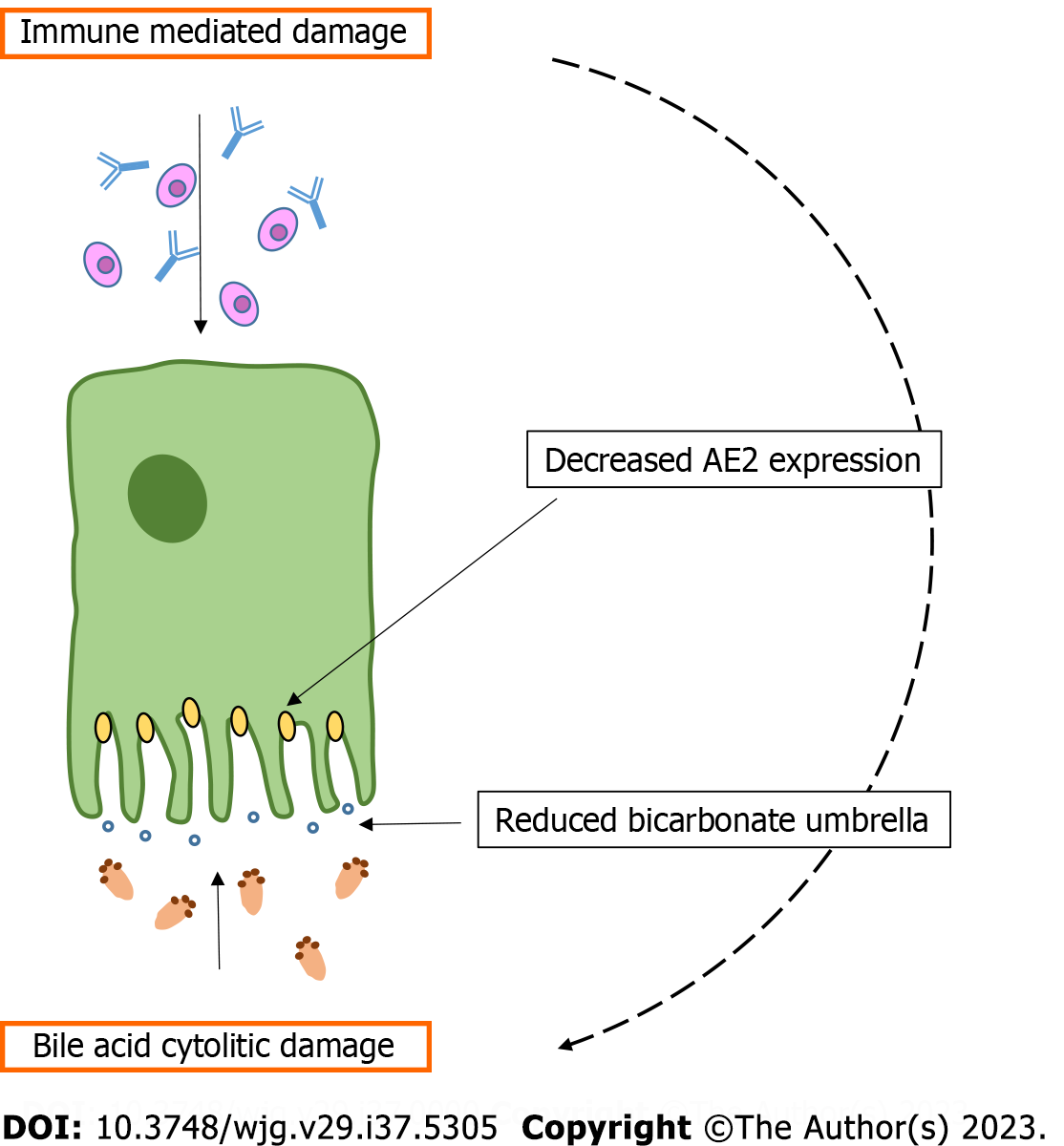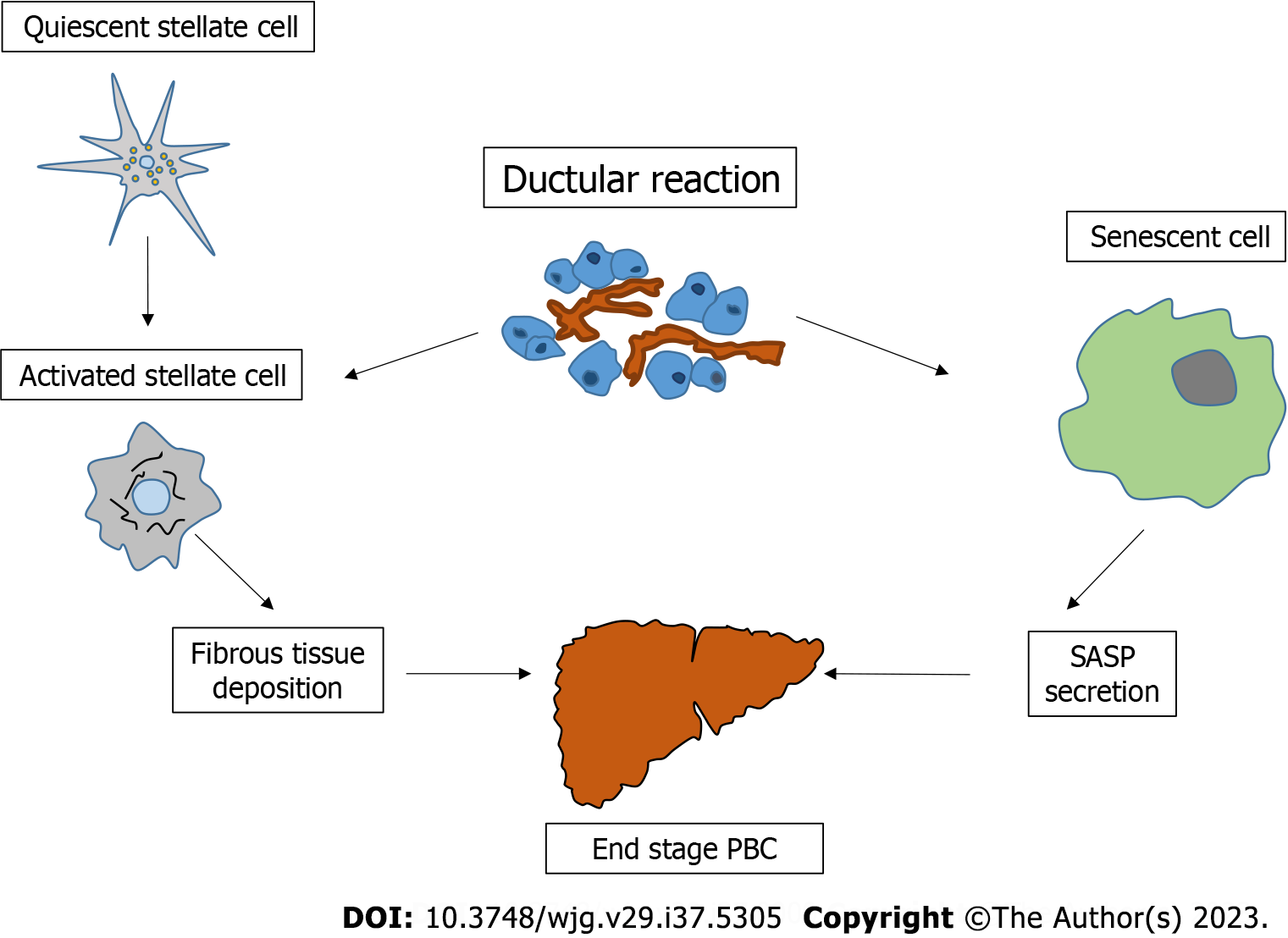Copyright
©The Author(s) 2023.
World J Gastroenterol. Oct 7, 2023; 29(37): 5305-5312
Published online Oct 7, 2023. doi: 10.3748/wjg.v29.i37.5305
Published online Oct 7, 2023. doi: 10.3748/wjg.v29.i37.5305
Figure 1 From immune mediated damage to bile acids injury.
In primary biliary cholangitis the inflammatory process induces a decrease in chloride-bicarbonate exchangerexpression. This in turn determines a reduction of bicarbonate film (bicarbonate umbrella) on the canalicular portion of bile duct cells, exposing them to hydrophobic bile acids injury. AE2: Chloride-bicarbonate exchanger.
Figure 2 Central role of ductular reaction in the progression of primary biliary cholangitis.
Ductular reaction contributes to the activation of hepatic stellate cells and simultaneously favours a cell senescent phenotype. These events support the ductopenic/cirrhotic evolution of liver tissue during this cholestatic disease. PBC: Primary biliary cholangitis; SASP: Senescence-associated secretory phenotype.
- Citation: Lenci I, Carnì P, Milana M, Bicaj A, Signorello A, Baiocchi L. Sequence of events leading to primary biliary cholangitis. World J Gastroenterol 2023; 29(37): 5305-5312
- URL: https://www.wjgnet.com/1007-9327/full/v29/i37/5305.htm
- DOI: https://dx.doi.org/10.3748/wjg.v29.i37.5305














